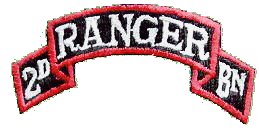6-8 DECEMBER, 1944 - (RHINELAND CAMPAIGN)

By Lt. Frank U. Roquemore
OPERATION HILL 400
7 - 8 DECEMBER
During the night, enemy patrols were active attempting to infiltrate through and around the hill position to cut off the companies' supply and communication. These enemy attempts were unsuccessful, due in part to extensive use of hand grenades by the rangers. The enemy did capture one casualty when the litter hearers went for riflemen after being attacked. (51)
Artillery and mortar fire continued to fall intermittently throughout the area. On the southeast of town, Companies B and C altered their positions to close the gap left by the withdrawal of A Company. A patrol sent out from C Company attempted to obtain locations of enemy positions. Due to enemy fires and wooded terrain, the patrol returned without any new information. (51)
By utilizing all available medical and headquarters jeeps, all the casualties suffered during the day were evacuated. (51)
In the early morning hours, prior to daylight, the remainder of Combat Command 'R' withdrew to positions in the rear. (52) This unit originally seized BERGSTEIN and during its occupation of the town had suffered numerous casualties both in men and materiel. (51)
Prior to 0700 on the morning of 8 December, more heavy enemy artillery and mortar fire fell on Hill 400 and BERGSTEIN. Following the usual pattern, the enemy counterattacked at 0700 with a company of infantry supported by fire from armored vehicles. (53)
This attack was aimed at the companies southeast of town. The enemy approached within small arms range before becoming disorganized. Again the enemy attack was repulsed by accurate small arms and automatic weapons pons fire. (54)
At 0900, the enemy forces made another attempt to dislodge the companies from Hill 400. (54) By this time the three companies on the hill had been reduced to about one-third size due to casualties incurred the first day and night. This attacking force was smaller than previous ones but due to the weakness of the defense, reached a position 50-100 yards from the Hanger positions. Artillery support and small arms fire finally drove the enemy back. (55,56)
Before the 0900 attack struck the hill positions, an artillery forward observer from the 32nd Field Artillery Brigade had reported into the battalion command post. The artillery fires this observer directed aided the companies materially in driving back the enemy. One enemy group was caught between the artillery fires and friendly line by adjustment of fire between the companies and the observer...this group suffered heavy casualties. (56)
With the repulse of this last attack, the actions of the enemy were unbelievably quiet. The remainder of the morning saw only sporadic artillery and mortar fire landing in and around BERGSTEIN. (56)
During the afternoon, an armed reconnaissance mission of four 9th Air Force fighter-bombers(P-47s) was sighted above the area.
This mission had not been requested by the Rangers but was a most welcome sight to the troops on the ground. The flight was either seeking targets of opportunity, or had been requested by units of the 8th Division, which were operating north and south of BERGSTEIN. Strafing and bombing, the flight attacked enemy positions several hundred yards southeast of the town, offering the ground troops a brief respite from enemy shelling. While strafing, some of the fire was delivered into the company positions southeast of town, but no casualties were suffered. (57)
At approximately 1700, the enemy again launched an attack, this time against both Ranger forces. This two pronged attack was preceded by heavy artillery and mortar preparations plus self-propelled fire on the troops southeast of town. Again the enemy was thrown back by fire, including a veritable 'curtain of fire' around the entire sector fired by the supporting artillery. Had it not been, for these artillery fires, the enemy may have succeeded in this attack. Of all the enemy attacks, this final one offered the most dangerous threat as the entire battalion defense system had been weakened through numerous casualties inflicted by enemy fires. (58,59)
Failing on this attack, the enemy withdrew to his previous positions. The remainder of the day and night saw only harassing artillery and mortar fire falling in the sector. (57)
Late in the afternoon, information was received at the battalion command post that a relief would be affected that night. (57)
The battalion commander alerted the companies for the move to the rear. Each company sent a guide to the battalion command post at 2000 to lead relieving units onto positions. At about 2200, the first elements of the 13th Infantry, 8th Division arrived at the command post and relief of the Ranger companies was started immediately. (60)
The companies on the hill were relieved first, with F Company moving into the lead. Relief of the entire battalion was accomplished at 2400.
To add to the discomfort of the depleted and weary Rangers, a heavy snow started falling, early in the evening. As if to plague the unit, this snow continued until the battalion closed in its former assembly area. (61)

